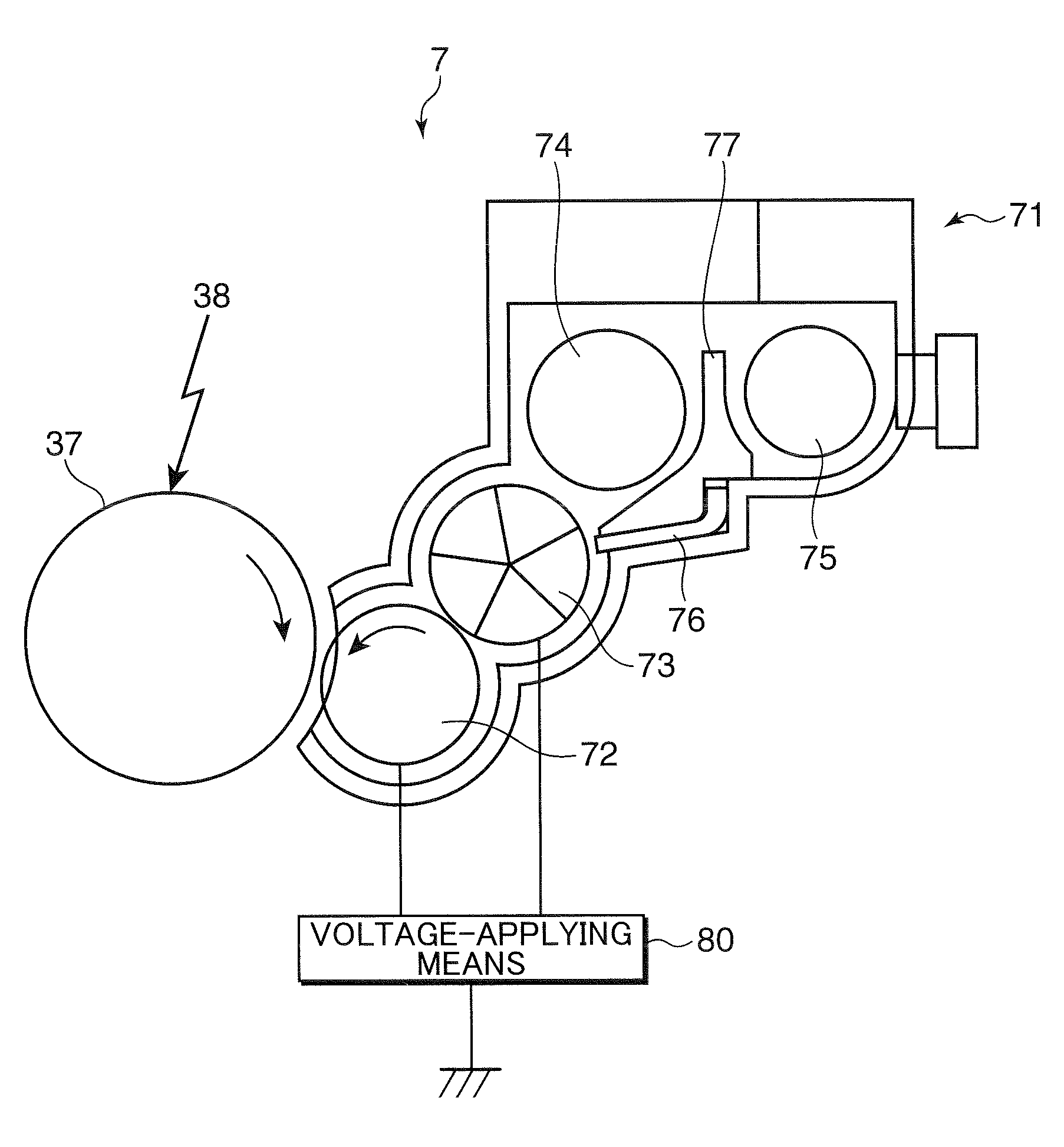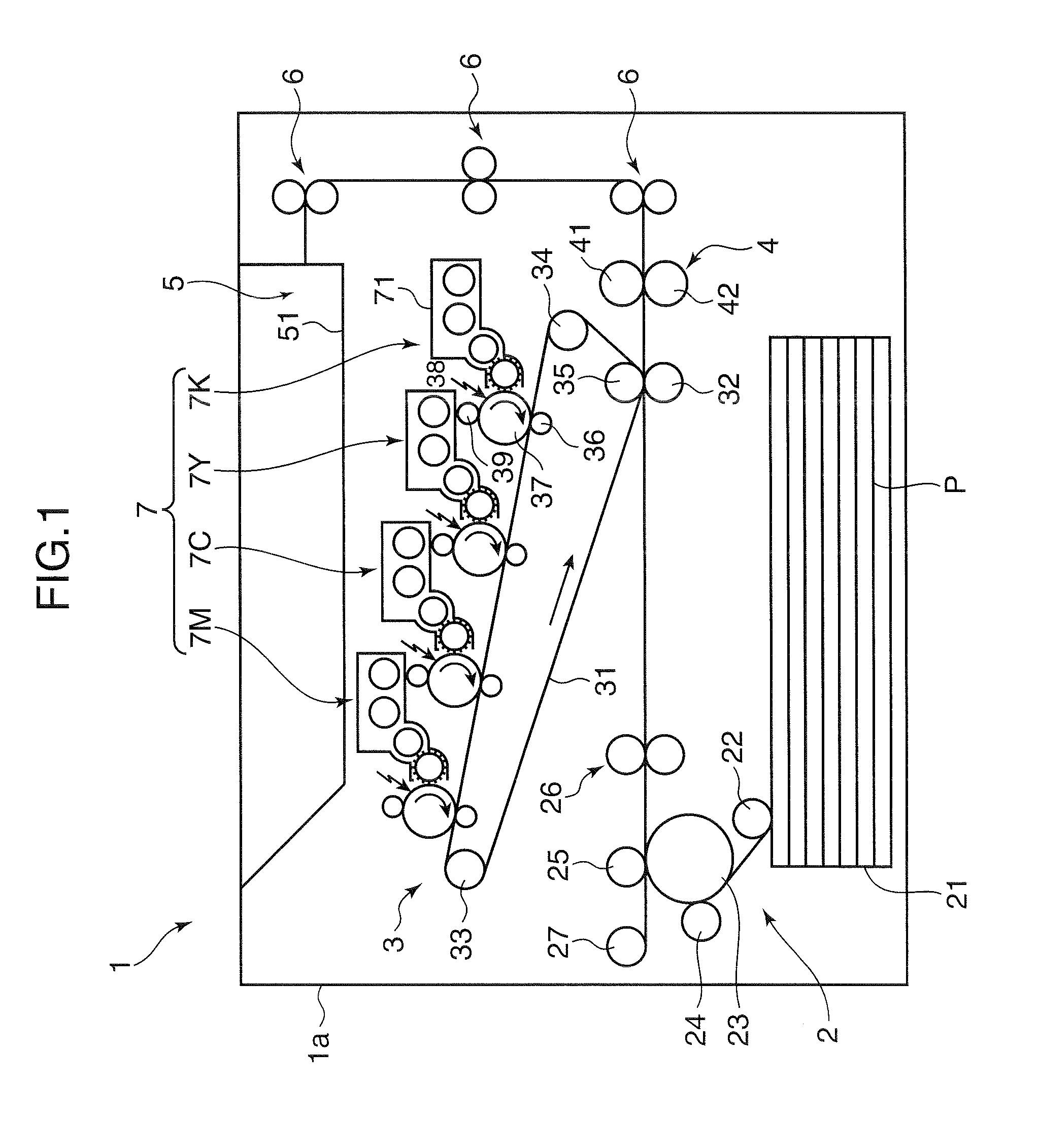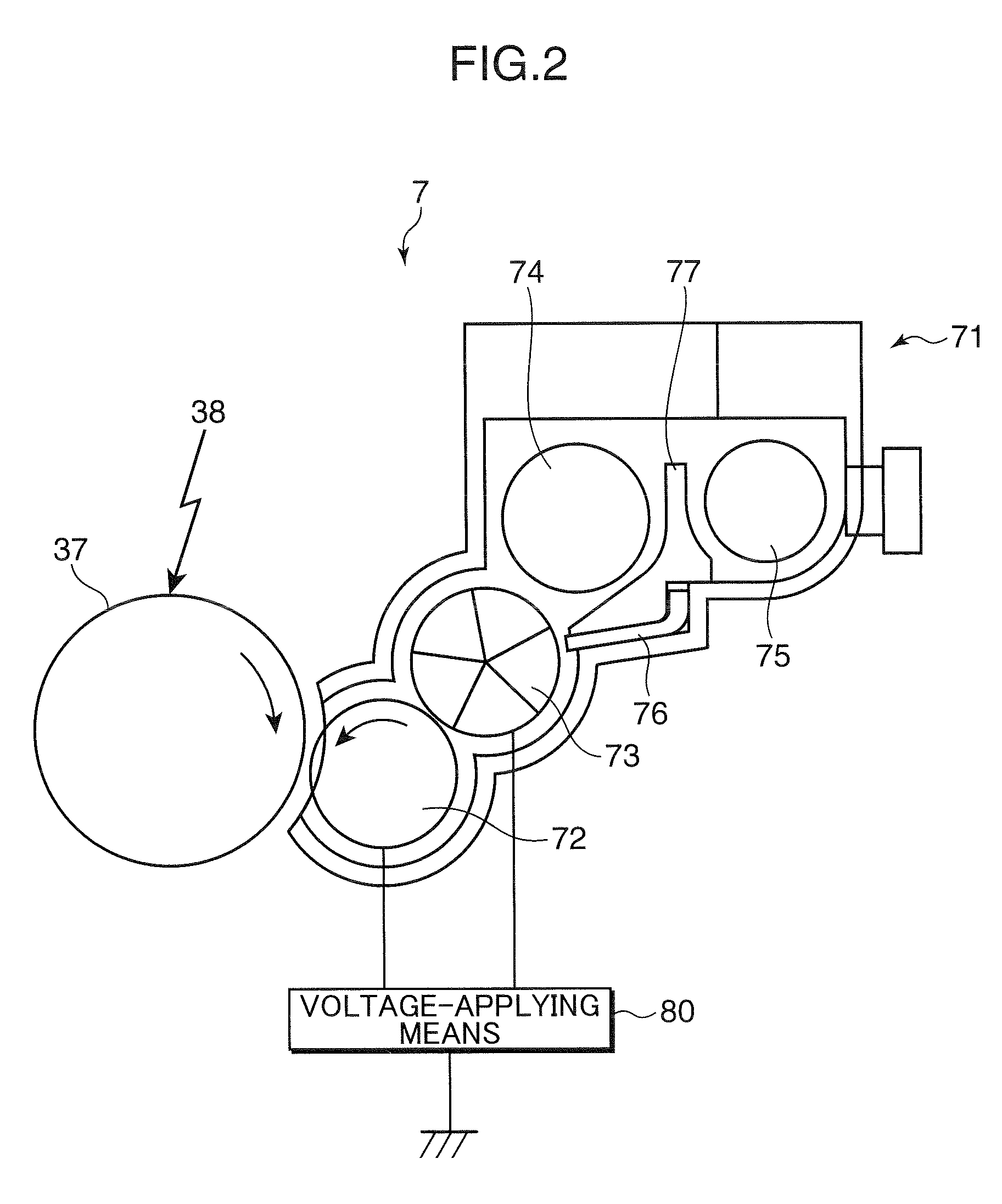Developing unit and image forming apparatus
a technology of developing unit and image forming apparatus, which is applied in the direction of electrographic process apparatus, instruments, optics, etc., can solve the problems of large fluctuation of developing gap, large vibration or shaking of developing roller, and increase in size, so as to suppress image unevenness
- Summary
- Abstract
- Description
- Claims
- Application Information
AI Technical Summary
Benefits of technology
Problems solved by technology
Method used
Image
Examples
experiment 1
[0088][Experiment 1]
[0089]A result of experimental studies on influences of the DUTY ratio will be described. FIG. 5 is a graph showing a relationship between a developing gap and an image density in various DUTY ratios, wherein the vertical axis represents a reflection image density of each obtained image, and the horizontal axis represents a developing gap (μm). The reflection image density is a relative density measured using a reflection densitometer and determined on the basis of a sheet as a substrate. This graph shows a result of a test where images were formed using the following developing bias voltage:
Frequency:5 kHzThe number of cycles:2V1 =1000 VV2 =−500 VV3 =0 VT1 =T2
[0090]The term “continuous waveform” means a developing bias voltage which has only the first duration T1 to apply the AC voltage without the second duration T2 to stop applying the AC voltage.
[0091]As seen in FIG. 5, in a range where the developing gap is relatively wide, a level of lowering in the image d...
experiment 2
[0092][Experiment 2]
[0093]A result of experimental studies on the number of cycles will be described. FIG. 6 is a graph showing a relationship between an image position and an image density in various numbers of cycles, wherein the vertical axis represents a reflection image density of each obtained image, and the horizontal axis represents a distance from a center of the image (mm). Except that the number of cycles is varied, and the DUTY ratio is fixed at 50%, a development bias voltage in the Experiment 2 is the same as that in the Experiment 1. An image formed in the Experiment 2 was a solid image having a width of 12 mm.
[0094]As seen from FIG. 6, when the number of cycles is set at one, an edge region has a higher image density than that in the remaining (i.e., inward) region. The reason would be that toner is likely to attach to the edge region in an initial stage. FIG. 6 shows that the number of cycles can be set at two or more to eliminate a difference between respective ima...
experiment 3
[0095][Experiment 3]
[0096]A result of experimental studies on an influence of a direction of an AC voltage just before transition from T1 to T2 will be described. A fog level in a non-image region and an image density were measured when the AC voltage just before transition from T1 to T2 was set at respective voltages in the first direction P1 for causing toner to develop an electrostatic latent image and in the second direction P2 for pulling toner back to the developing roller 72. The result is shown in Table 1.
TABLE 1P1P2AC Voltage Just BeforeREFLECTIONREFLECTIONTransition from T1 to T2FOG LEVELIMAGE DENSITYFOG LEVELIMAGE DENSITY1 CYCLEX1.65Δ1.462 CYCLESX1.67◯1.473 CYCLESX1.64◯1.454 CYCLESX1.65◯1.465 CYCLESX1.66◯1.45
[0097]As seen in Table 1, in view of preventing the occurrence of fogging in the non-image region, the AC voltage just before transition from T1 to T2 has to be set in the second direction P2 for pulling toner back to the developing roller 72. It is also proven that t...
PUM
 Login to View More
Login to View More Abstract
Description
Claims
Application Information
 Login to View More
Login to View More - R&D
- Intellectual Property
- Life Sciences
- Materials
- Tech Scout
- Unparalleled Data Quality
- Higher Quality Content
- 60% Fewer Hallucinations
Browse by: Latest US Patents, China's latest patents, Technical Efficacy Thesaurus, Application Domain, Technology Topic, Popular Technical Reports.
© 2025 PatSnap. All rights reserved.Legal|Privacy policy|Modern Slavery Act Transparency Statement|Sitemap|About US| Contact US: help@patsnap.com



